© 2024 Apreva Hospice
All Rights Reserved
All Rights Reserved
Living with a chronic condition, like Diabetes or COPD, is more than a medical challenge; it’s a journey that intertwines with every aspect of your life. Amid the routine of medications, doctor’s appointments, and self-care, it’s easy to lose sight of what brings you joy in life. This is where mindfulness, a simple yet profound practice, steps in—offering you a path to navigate your condition with grace and resilience.
At its core, mindfulness is about being fully present in the moment. It involves acknowledging and accepting your thoughts, feelings, and bodily sensations without judgment. For someone managing a chronic condition, this practice becomes a gentle reminder that you are more than your illness–you are a whole person with unique experiences and emotions. In turn mediation, is the formal practice of mindfulness; and, a practice is the embodiment of a concept of approach. In this case, mindfulness.
Start by dedicating a few minutes each day to mindfulness. Find a quiet space, sit comfortably, and close your eyes. Focus on your breath, feeling the rise and fall of your chest. Remember, mindfulness is not the absence of thoughts. As Sam Harris writes, “The problem is not thoughts themselves, but the state of thinking without knowing that we are thinking.”

As your mind wanders to thoughts about your condition, notice them without criticism and gently guide your attention back to your breathing. This simple act can become a powerful tool in managing the stress and anxiety that often accompany chronic conditions.
There are many types of mindfulness practices (e.g., headless way, metta, breathing techniques, TM, etc.), and it is important to explore each to build well rounded practice. A body scan meditation can heighten your awareness of how your condition affects you physically. Lie down and mentally traverse your body from toes to head. Notice any discomfort, tension, or pain, acknowledging these sensations with kindness. This practice not only deepens your understanding of your body’s needs, but also fosters a compassionate relationship with yourself.
Chronic conditions often necessitate dietary changes, which can feel restrictive or overwhelming. Mindful eating turns this necessity into a practice of awareness and enjoyment. As you eat, concentrate fully on the experience—the textures, flavors, and sensations. Chew slowly, savor each bite, and notice how your body feels. This approach can lead to better dietary choices and a more harmonious relationship with food.
Maintain a gratitude journal, recording moments of joy, no matter how small. This practice shifts focus from the burdens of your condition to the many facets of life that bring happiness and fulfillment. It’s a powerful way to maintain a positive outlook, even on challenging days. Remember, a smile a day keeps the doctor away.
With time, mindfulness can significantly reduce stress, elevate mood, and enhance your overall well-being. It empowers you to face your condition with a balanced mind and a peaceful heart.
Your journey with a chronic condition is uniquely yours, filled with its own challenges and triumphs. Mindfulness offers you a tool, not only to navigate this journey, but also to embrace each day with a renewed sense of purpose and peace. It reminds you that in the midst of life’s storms, there’s always a space of calm within you.

Caring for a loved one in hospice care is a deeply emotional and transformative journey. In this sensitive phase, communication takes on a profound significance, transcending conventional conversations to become a vital tool in providing comfort and understanding. This blog post explores the nuances of active listening and its remarkable impact in hospice care.
Active listening in the context of hospice care is about fully immersing yourself in your loved one’s emotional and psychological world. It involves much more than processing spoken words; it’s about tuning into the emotions, fears, and unspoken needs underlying those words. This level of listening demands a high degree of empathy, patience, and full presence. It’s essential for creating an environment where your loved one feels genuinely heard and understood.
Effective active listening involves several key techniques:
The key to active listening is openness. This means being willing to engage in conversations that may seem difficult on the surface, but you know will deepen the bond between you and your loved one. For instance, start small: What’s something you’ve always want to know about your loved one, but never asked?

The environment plays a crucial role in facilitating open communication. A peaceful and comfortable setting can significantly ease the process of sharing personal thoughts and feelings. Soft lighting, a quiet room, and a relaxed atmosphere can make a considerable difference. It’s also vital to approach difficult conversations with sensitivity and care. Being prepared for these challenging discussions ensures that your loved one feels safe and supported in expressing themselves.
Moreover, understanding the power of silence in communication is essential. Silence, when used thoughtfully, can be a powerful aspect of active listening. Being present, even in moments of quiet, can offer immense comfort and solidarity.
Engaging in mindful communication in hospice care is not only beneficial for the individual receiving care but is also profoundly enriching for the caregiver. It enhances your capacity for empathy, strengthens your patience, and deepens your understanding of the complex emotions involved in the end-of-life journey.
Regular reflection on your listening experiences is crucial. Consider how your approach affects your interactions and remain open to adapting your methods to better suit your loved one’s needs. This adaptive approach not only improves your effectiveness as a caregiver, but also contributes significantly to your personal growth.
If it helps, consider starting a daily reflection journal. At the end of each day, write down the thoughts, emotions, and sensations you experienced throughout the day. The key to journaling is to write for yourself—no one else, other than yourself, is going to read the material. So, write whatever comes to mind and feel free to revisit your writings later on to see how your mentality has evolved.
In the profound journey of hospice caregiving, mastering the art of active listening is a testament to compassion and connection. It allows caregivers to provide support that goes beyond physical care, touching the hearts and souls of those they look after. By embracing the principles of mindful communication, you ensure that your loved one’s final chapter is filled with understanding, respect, and a deep sense of being valued and heard.
ˈstres
a state of mental tension and worry caused by problems in your life, work, etc.
something that causes strong feelings of worry or anxiety
Stress can occur in any aspect of our lives, including (and sometimes especially) caregiving. Those caring for a loved one who is ill are at increased risk of stress, and as a result, at increased risk for health issues due to that stress. The topic of stress management – especially for caregivers – has become a popular one. There are many resources available that provide tips to help caregivers manage stress. One of these is a gratitude journal.
Before we jump right into the gratitude journal, let’s talk about how gratitude can help reduce stress. Gratitude is said to help lower cortisol (stress hormone) levels in our body by about 23%. Reducing stress can in turn reduce health issues that may result from stress. These can include anxiety, depression, headaches, sleep issues, weight gain, and even heart disease.
One study indicates the beneficial role of gratitude on coping with caregiver stress and even recommends incorporating gratitude in psychological interventions for caregivers.

A gratitude journal is a tool used to keep track of the good things in life – the things you are grateful for. No matter how difficult or stressful life may get, there is always something to be grateful for. Taking the time to write it down in a journal can help you remember to take a break from everything that is causing you stress and focus on the good.
It doesn’t matter if it’s in physical or electronic form. All that matters is that you are writing it down. Physical journals can be as simple as a notebook. There are also templates online that can be downloaded and printed or journals that can be purchased. Electronic journals can be a Word document on your computer or a notes orjournaling app on your phone.
In addition to reducing stress levels, keeping a gratitude journal can:

Getting started is often the hardest part of any new habit. Here are some tips to help you get started.
Choose how you want to journal. As we previously mentioned, it can be in physical or electronic format. Things to consider when choosing how you want to journal include:
How to structure your journal. You should do what works for you. Try different templates and formats until you find one you like best. For example, do you prefer to write full paragraphs or bulleted lists?
Commit to a schedule. This is very important. Like any habit, you have to commit to it if you really want to see the benefits. If journaling every day feels like too much to commit to in the beginning, aim for once a week or a couple times a week. You can always increase it to a daily reflection once you get in the swing of things.
Still not sure where to start? Try this 21-day Gratitude Challenge!
Happy journaling!
National Handwashing Week is celebrated in the United States during the first full week of December. It is a time to raise awareness of the importance of handwashing and to teach people how to wash their hands effectively.
Handwashing is one of the simplest and most effective ways to prevent the spread of germs. Germs can be found on all sorts of surfaces, including doorknobs, light switches, and countertops. When we touch these surfaces and then touch our eyes, nose, or mouth, we can transfer germs to our bodies and get sick.
Handwashing with soap and water removes germs from our hands and prevents them from spreading. It is especially important to wash our hands at certain times, such as:
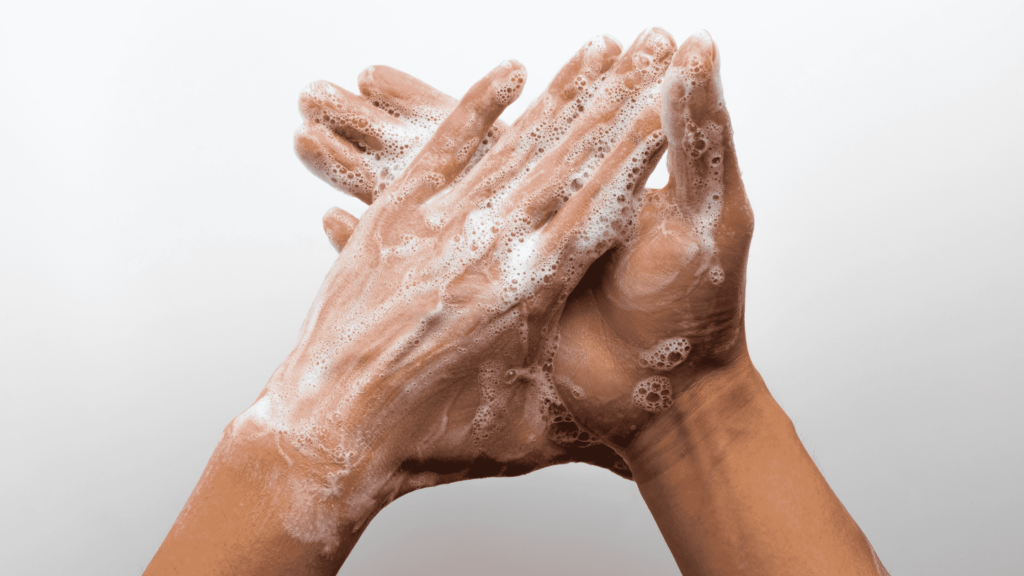
To wash our hands effectively, we should follow these five steps:
Handwashing is one of the best ways to protect ourselves and others from getting sick. By following the five steps above, we can all help to keep our communities healthy.

In honor of National Handwashing Week 2023, here are some tips for teaching your children about the importance of handwashing:
By teaching your children about the importance of handwashing, you can help them to develop healthy habits that will last a lifetime.
Need more tips or assistance with your loved one? We are here to help. Contact us today to learn more about our services!
Each year on December 1, people worldwide recognize World AIDS Day, a day dedicated to remembering and raising awareness about the HIV and AIDS epidemic. We take part in this day to remember the lives lost since 1988 and raise awareness for help and support for those living with this condition.
The first World AIDS Day took place in 1988, which makes 2023 the 35th anniversary year of this remembrance day. Each year has a specific theme, and this year’s theme is “World AIDS Day 35: Remember and Commit.” Over the past 35 years, scientists and healthcare professionals have made significant advancements in the understanding and available treatments for this condition. Furthermore, this awareness day is also dedicated to helping to reduce the stigma associated with HIV and AIDS.
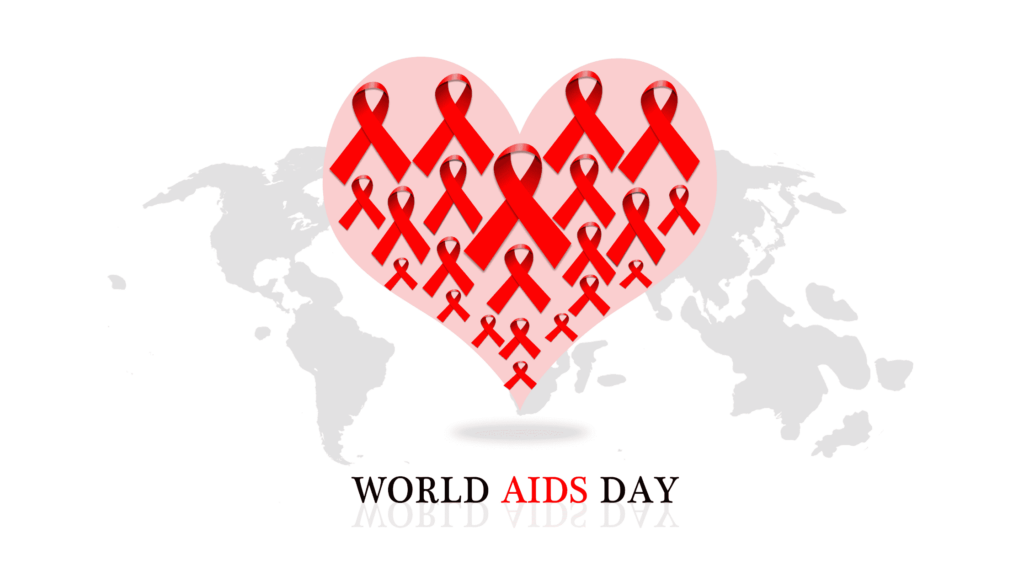
World AIDS Day was first started in 1988 to help raise research funds and fight prejudice surrounding this condition. Since then, people all over the world have stood together to take part in this important day.
We offer supportive hospice care for individuals with advanced AIDS. Our hospice care services help patients with terminal illnesses live the rest of their lives in as much comfort as possible. Our hospice care services can meet a variety of needs for patients with advanced AIDS, which can help provide symptom and pain management.

During the last stages of AIDS, a person may experience night sweats, swollen lymph nodes, and other uncomfortable symptoms. Hospice care can provide personalized comfort and care during these final stages. In addition to physical support, hospice care can also provide spiritual and emotional support during this difficult time. We also provide additional support for family members and caregivers, as well as bereavement support.
If you or a loved one is living with AIDS, our team is here to help. Ask us about how our supportive and personalizable hospice care services can help provide support and enhance your quality of life. For all of our services, we take a team-oriented approach to provide the best care possible for you and your loved one. Contact us today to learn more.
National Pancreatic Cancer Awareness Month, a time to raise awareness of this deadly disease. Pancreatic cancer is the fourth leading cause of cancer death in the United States, with a five-year survival rate of just 10%. However, early detection and treatment can improve survival rates significantly.
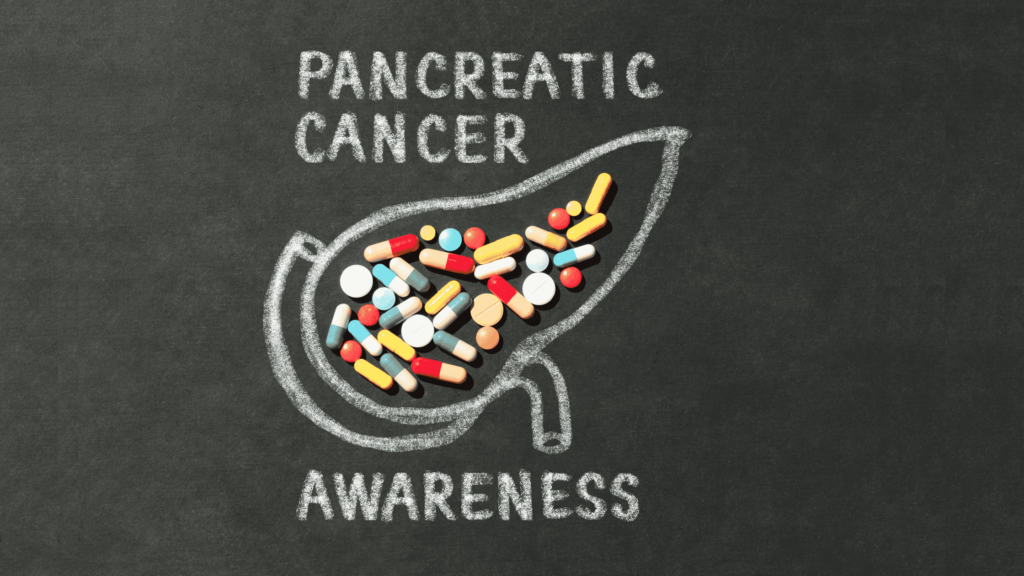
Home health care can provide valuable support to people with pancreatic cancer and their caregivers. Home health aides can help with activities of daily living, such as bathing, dressing, and grooming.
Home health nurses can provide skilled nursing care, such as wound care, pain management, and medication administration. They can also teach patients and caregivers about the disease and how to manage it at home.
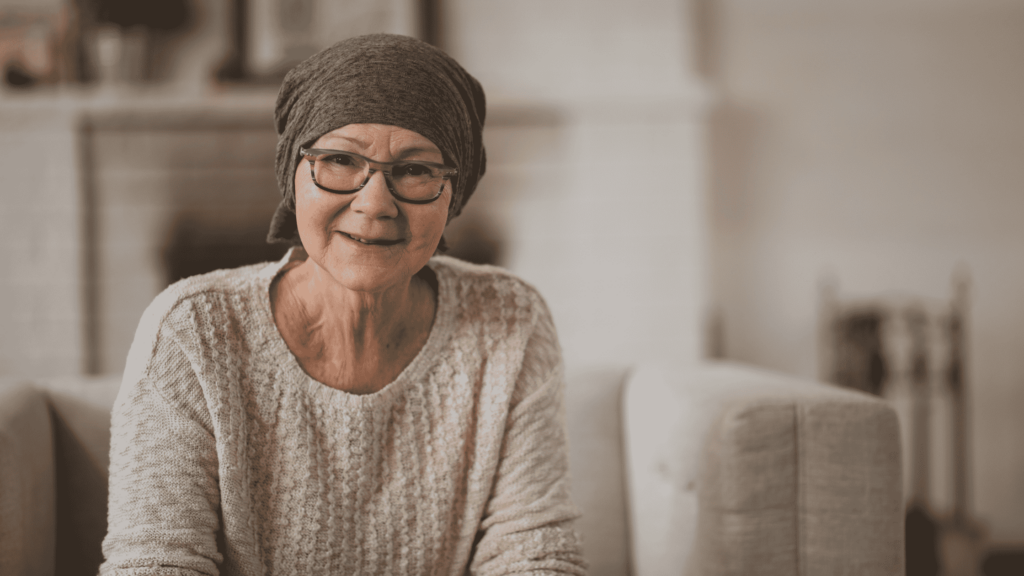
Hospice is a type of care that focuses on providing comfort and support to people with terminal illnesses. Hospice can be provided at home, in a nursing home, or wherever the patient calls home.
Hospice care can help people with pancreatic cancer live their remaining time as comfortably and fully as possible. Hospice care can also provide support to caregivers during this difficult time.
If you are a patient with pancreatic cancer or a caregiver for someone with pancreatic cancer, please know that you are not alone. There are many resources available to help you, including compassionate hospice care in the place you call home. To learn more about how we can help, please contact us today!

Alzheimer’s disease and other forms of dementia are progressive diseases that eventually lead to end of life for those suffering. When your loved one reaches more challenging stages of dementia, hospice care is extremely valuable. Hospice is a specialized type of care that focuses on comfort and quality of life for patients who are terminally ill—with a prognosis of six months or less if their disease runs its normal course.
Transitioning to hospice care can be a difficult decision, but it can also be a relief for both patients and caregivers. Hospice care can provide your loved one with the support and care they need during their final months of life. You do not need to wait until the very end to initiate hospice—which is a common misconception.
If your loved one does not have a Primary Care Physician, we can help you obtain an order for hospice care. The PCP will write an order to initiate hospice. This is step one.
Once you meet with us, you will be assigned a team of caregivers who will work with you to create a care plan for your loved one. The hospice team will include nurses, social workers, aides, and other professionals who are skilled in caring for people with dementia.
We will bring in all necessary supplies and durable medical equipment (DME) that your loved one will need to be safe and comfortable in the place they call home.
Our Hospice agency can provide a variety of services to help you and your loved one transition to hospice care. These services may include:
If you are considering hospice care for your loved one with Alzheimer’s or another form of dementia, please contact us today. We make the process simple, letting you focus on what matters most!
November is National Family Caregivers Month, a time to celebrate the millions of Americans who provide unpaid care to their loved ones. Caregivers play a vital role in our society, helping people with chronic illnesses, disabilities, and age-related impairments live their best lives.
Caregivers provide a wide range of services, from helping with activities of daily living like bathing and dressing to providing emotional support and companionship. They may also manage their loved one’s medications, transportation, and finances.
Caregiving can be a challenging but rewarding experience. Caregivers often report feeling a sense of purpose and satisfaction in helping their loved ones. However, caregiving can also be stressful and demanding, both physically and emotionally.

That’s why it’s important to recognize and support caregivers during National Family Caregivers Month and throughout the year. There are many ways to do this, such as:
Here are some of the ways that caregivers help those they love:
Caregivers can help their loved ones stay healthy by managing their medications, providing transportation to medical appointments, and helping them follow their doctor’s recommendations. Caregivers can also help their loved ones cope with stress and anxiety, and maintain a positive outlook on life.
Caregivers can help their loved ones maintain their independence by assisting with activities of daily living, such as bathing, dressing, and cooking. Caregivers can also help their loved ones stay connected with their community and participate in activities that they enjoy.
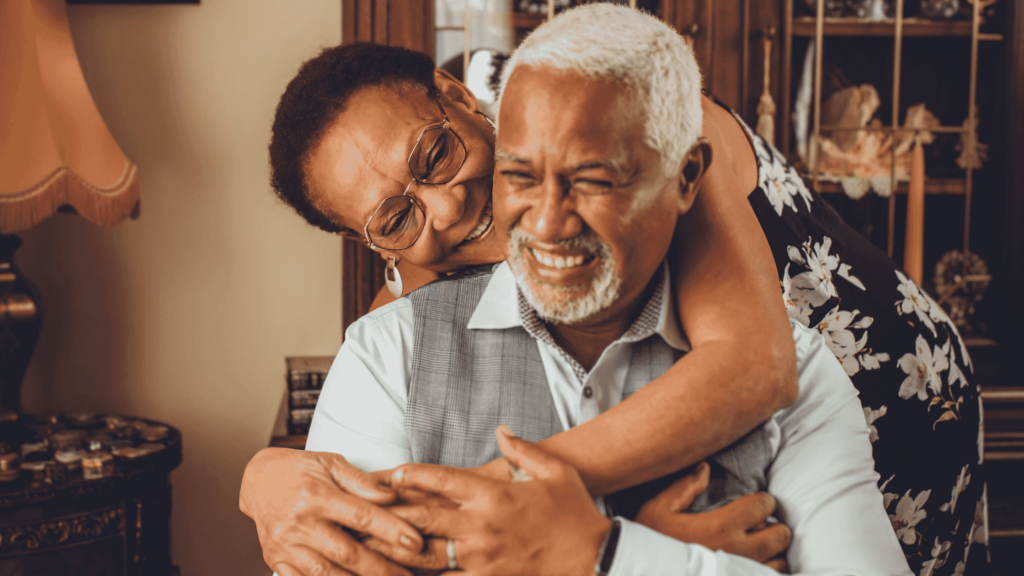
Caregivers offer their loved ones companionship and emotional support, which can be essential for their well-being. Caregivers can listen to their loved one’s concerns, offer advice and encouragement, and help them to feel loved and valued.
Caregivers are essential to our society, and they deserve our appreciation and support. During National Family Caregivers Month, let’s celebrate the caregivers in our lives and show them how much we care.
If you are a caregiver and would like to know more about the services we provide, please let us know. We would be happy to serve you and your loved one!
Alzheimer’s disease is a progressive brain disorder that slowly destroys memory and thinking skills. It is the most common cause of dementia in older adults. Alzheimer’s disease affects everyone differently, but it eventually leads to severe cognitive impairment and death.
There is no cure for Alzheimer’s disease, but there are treatments that can help manage the symptoms and slow the progression of the disease. Caring for someone with Alzheimer’s can be challenging, but it is also a rewarding experience.
Educate yourself about the disease.
The more you know about Alzheimer’s disease, the better equipped you will be to care for your loved one. There are many resources available online and in your community that can provide you with information and support.
People with Alzheimer’s disease are at risk of falls, wandering, and other accidents. It is important to create a safe and supportive environment for your loved one. This may involve removing tripping hazards, installing locks on doors, and using GPS tracking devices (such as medical alert bracelets or inserting Air Tag-like devices in shoes).
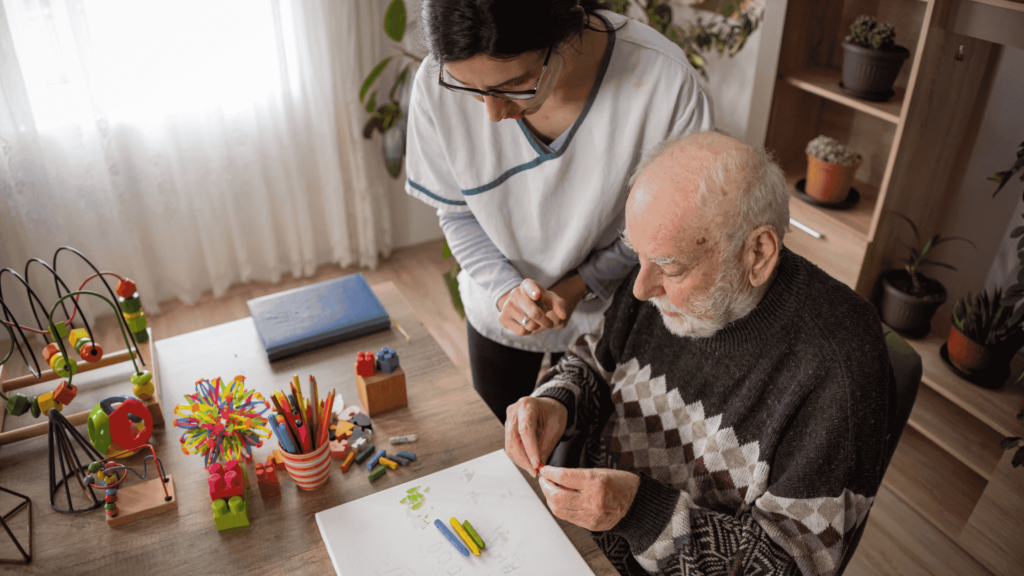
People with Alzheimer’s disease often thrive on routine. Establish a regular schedule for meals, activities, and bedtime. This can help to reduce stress and anxiety. (Tip: use colorful plates to help make food easily identifiable).
Alzheimer’s disease can cause people to behave in ways that are frustrating and confusing. It is important to be patient and understanding. Remember that your loved one is not trying to be difficult. (Try not to raise your voice—rather, use a calming tone as much as possible).
Caring for someone with Alzheimer’s can be physically and emotionally demanding. It is important to take care of yourself. Get enough sleep, eat healthy foods, and exercise regularly. Make time for activities that you enjoy.
Even if your loved one cannot engage in conversations or activities like they used to, they still enjoy spending time with you. Make time to simply sit with your loved one, hold their hand, or listen to music together. (Music therapy has proven to be effective in calming/lessening anxiety + helps with activities such as reminiscing).
Tell your loved one that you love them and appreciate them. Let them know that you are there for them and will always support them.

Encourage your loved one to continue doing activities that they enjoy. Help them to stay connected with their loved ones and community.
No matter how small, celebrate your loved one’s accomplishments. This will help to boost their self-esteem and confidence.
Caring for someone with Alzheimer’s can be challenging, but it is also a rewarding experience. By following the tips above, you can provide your loved one with the care and support they need.
Life is a Journey. We are With You Every Step of The Way!
Contact us to learn more about how we can help you and your loved in the place they call home.